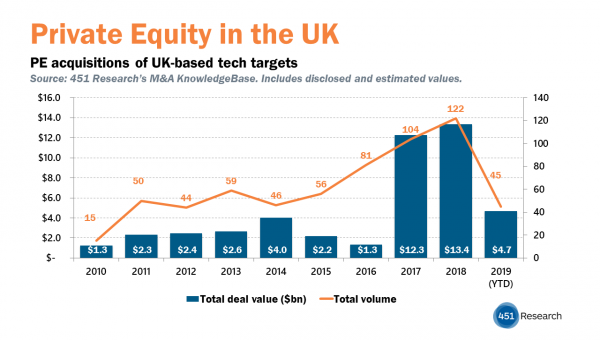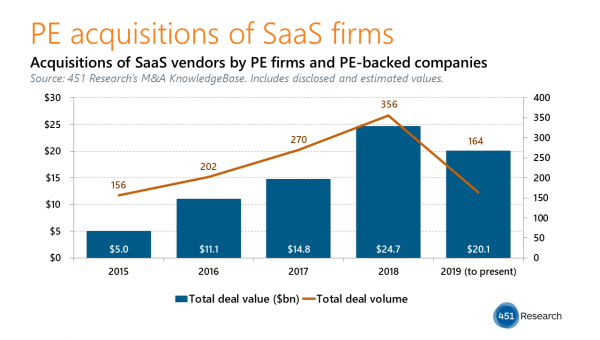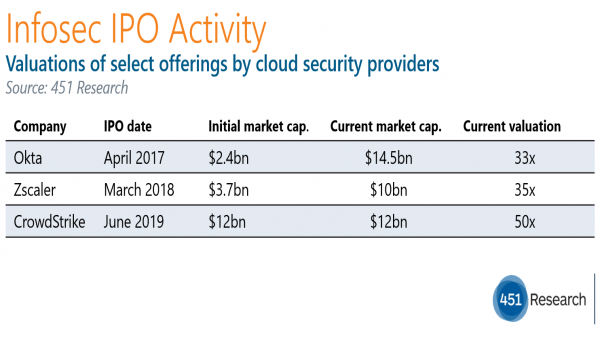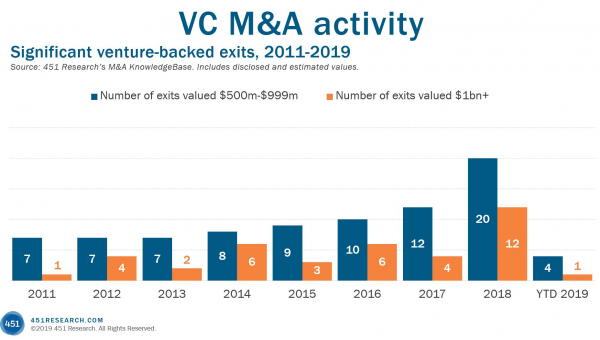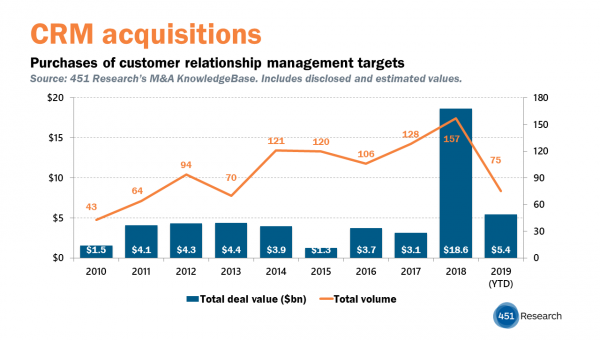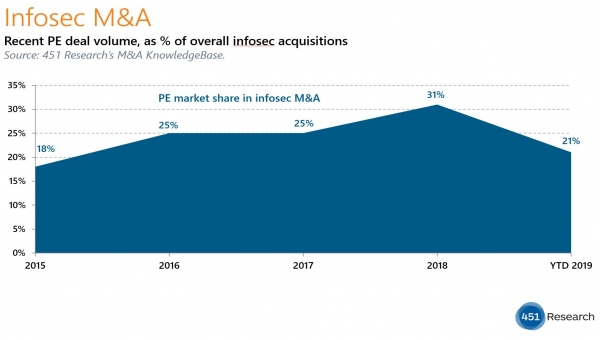by Scott Denne
Amid the uncertainty surrounding Brexit, private equity (PE) firms are slowing their activity in the UK for the first time in five years. With an October deadline on the horizon and little clarity about how the UK’s exit from the EU might proceed, buyout shops are scooping up fewer targets in that country than they did last year. Most of the decline, however, has occurred at the edges of the market.
According to 451 Research’s M&A KnowledgeBase, PE firms and their portfolio companies have bought just 45 UK-based tech targets in 2019, on pace for an 18% decline from last year’s total (122). That shift counters a years-long increase, as the number of sponsor acquisitions of UK-based vendors has previously risen each year since 2014. Questions about a target’s ability to hire or sell its wares abroad post-Brexit seem to be having the most impact on those buyers that don’t often purchase UK-based companies, and lowering the appetite for discounted targets.
The most frequent acquirers remain active. The PE firms that have bought the highest number of UK-based vendors this decade (TA Associates, Vista Equity, Inflexion and HgCapital) have all continued to purchase there this year. All but Inflexion have acquired more than one UK-based company in 2019. And the decline seems concentrated on deals with below-market valuations. The pace of UK-based vendors trading to buyout shops for more than 3x trailing revenue has risen, our data shows, while transactions where companies sell for less than 2x have declined.
